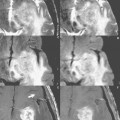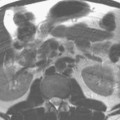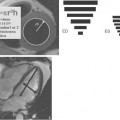65 Blood Oxygen Level-Dependent (BOLD) Imaging: Theory
Blood oxygen level-dependent (BOLD) imaging, a type of functional magnetic resonance imaging, exploits the decrease in magnetic susceptibility caused by small changes in the volume of oxygenated blood supplied to a specific region of the brain during and after increased neuronal activity. To understand the BOLD effect, a discussion of the fundamental aspects of susceptibility imaging as well as an explanation of the physiologic changes in the brain during activity is required.
Magnetic susceptibility (see Case 96) relates to the ability of a material to become magnetized within an externally applied magnetic field and is measured by the magnetization of the material divided by the field strength. Materials with a strong magnetic susceptibility are referred to as ferromagnetic, those with a weak magnetic susceptibility are known as paramagnetic materials, and diamagnetic materials have little to no effect on the localized magnetic field with respect to surrounding tissues.
During an MRI exam, ferromagnetic and paramagnetic materials within the body take on magnetic characteristics causing localized changes or inhomogeneity within the field. Protons in the vicinity are affected by this change and experience a greater phase shift after a spin excitation, increasing T2* decay and leading to a reduction in localized signal. In the presence of strongly ferrous materials, a complete decay of signal takes place leading to a signal void in the image.
Stay updated, free articles. Join our Telegram channel

Full access? Get Clinical Tree








